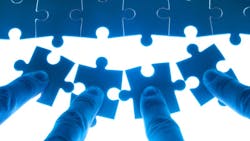Podcast: Unlocking Team Success: Effective Team Development
In this episode of Behind the Curtain: Adventures in Continuous Improvement, podcast co-hosts Professor Mohamed Saleh and John Dyer discuss the four phases of team development:
Form. This is the “mixed emotions” stage of team development, where individuals are still trying to figure out what is going on. There may be anxiety, pride, even concern that the room is too cold.
Storm. This is not the equivalent of brainstorming but instead it is a sense of trouble in the team. Dyer notes that when you bring a diverse group together, there’s going to be friction and conflict. “It may be for 10 minutes or 10 hours, and the longer it goes, the more destructive it is to the team, to the point where if it goes too long, the team may not be able to recover,” he says.
Norm. In this stage things start to settle down after the storm, and it’s usually brought about by the team achieving its first win.
Perform. The team is now beyond the first accomplishment and is working together to improve key metrics. The continuous improvement experts shared a couple of key points about this phase. The first: Because a team reaches the perform stage doesn’t mean it stays there. “The biggest trigger is when there are one or two key team members that rotate off and one or two new people come back on,” Dyer notes.
And second: This phase is when true problem-solving starts to happen, says Saleh. “At that point you have adaptability and effective communication and resilience … on the team that allow for problem solving to be more successful.”
